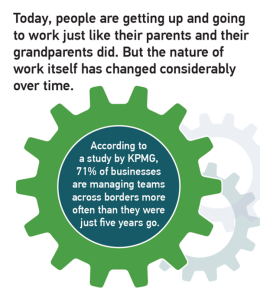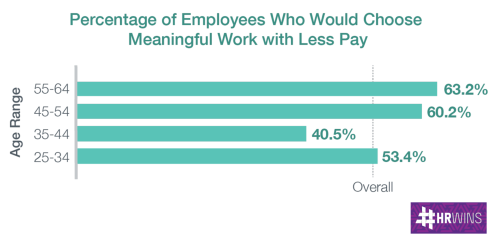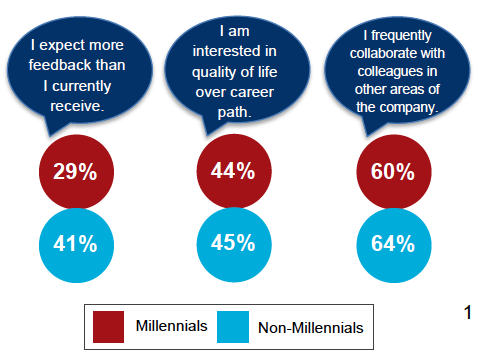 I’ve written previously about the new research coming out of KeyInterval Research here and here. The third report from the dynamic duo that is Tincup and Sumser is out now and it’s a blockbuster! Determining the optimal technical HR stack is big. It’s big and expensive. It’s big and expensive and can make or break an HR leader’s career.
I’ve written previously about the new research coming out of KeyInterval Research here and here. The third report from the dynamic duo that is Tincup and Sumser is out now and it’s a blockbuster! Determining the optimal technical HR stack is big. It’s big and expensive. It’s big and expensive and can make or break an HR leader’s career.
But first, you have to know what a technical stack is. I don’t assume that the majority of HR professionals know what this is, so here’s what Wikipedia says:
“A technology stack comprises the layers of components or services that are used to provide a software solution or application. Traditional examples include the OSI seven-layer model, the TCP/IP model, and the W3C technology stack. Technology stacks are often articulated as a list lof technologies, such as “J2EE with Java Server Faces running against a SQL Server database” or as a diagram.”
So a Technical HR Stack would be the collection of technologies/solutions that HR uses to manage all the people processes across an organization. It’s the payroll, recruiting, performance management, total rewards/recognition, learning management systems – all of these and more. And an Optimal Technical HR Stack would be the best collection of technologies/solutions that HR would use to manage the people processes across an organization.
I read some research 3 or 4 years ago that reported that organizations deploy, on average, 18 separate HR technology solutions – many of which are unable to connect with each other. These days the average may well be higher as HR professionals (and their IT partners) turn to technology to provide more efficient outcomes and the HR vendor community continues to innovate the use of SaaS, analytics, mobile and video.
So how can an HR leader or department make sense of the opportunities to apply technology, much less identify the “optimal” vendors and solutions? Well, the first step would be to buy this report. The analyses are practical. The insights are remarkable. This is a sea change in showing how HR technology is working – or not working – and what is actually happening in terms of finding solutions in an existing suite, looking for new providers or developing home grown solutions. The realities will surprise you.
The report delves into thirteen major areas of HR Technology and reveals 8 separate metrics in each area. The metrics include some of these:
- Market Penetration
- Net Promoter Score®
- How long companies keep their software
- Whether companies outsource, develop internally or use a tool that is part of an existing suite
The areas covered are:
 It’s interesting to note that as a result of their research, nine other areas of adoption will be added to their research agenda for 2016. Some of those are Engagement, Collaboration Tools, Video Interviewing, and Assessment.
It’s interesting to note that as a result of their research, nine other areas of adoption will be added to their research agenda for 2016. Some of those are Engagement, Collaboration Tools, Video Interviewing, and Assessment.
Without giving away the groceries here, some of the interesting findings include the following;
- The components (see above) with the highest and lowest NPS® scores are not what you think
- The replacement cycle (the amount of time between purchases) might be exactly what you would predict
- The frequency of developing homegrown solutions is pretty low
- The market penetration of the components is less than you would have predicted
- The likelihood that a component is outsourced is surprising
- Vendor brand recall is pretty high
Let’s look at just one of the thirteen solution components: Recruiting Systems. The analysts at KeyInterval believe that “Recruiting is where innovation happens most frequently in HR.”
“With between 12 and 20 sub-processes, recruiting operations rarely use all of the same tools in the same sequence. Unlike other HR functions recruiting techniques vary by job, industry, region, corporate culture and, business model.” Because of this, the analysis shows that practitioners don’t much like their recruiting systems. The conflict between the required fast action of identifying, recruiting and hiring the right kind of talent, and the legal requirements to collect and retain hiring data often collide. Indeed, the KeyInterval research shows that no other tool in the HR Tech Stack is so conflicted. HR professionals “routinely expect innovative results and performance from a system that is designed to mitigate legal risk.”
If you’re thinking about going to the market for a new HR technology solution, or you’ve finally decided to replace an existing solution, this report should be your first stop. It will help you see what other organizations your size are doing – buying, building or outsourcing. It will provide a road map for how to begin.
Here’s the thing: it will make you smarter than you already are. You can order it here.



















 Data from the survey tells us video is widely used by HR departments across the world. Polycom’s study found that video conferencing ranked as a top-three tool for communications, with HR respondents ranking email as the number one preferred communications tool (88%), followed by voice-conference calls at 62% and video conferencing at 46%. Interestingly, HR executives who use video at work today said they would prefer video collaboration to email as their top method of business communication within three years. HR executives that participated in the study saw clear benefits of using video communication tools over other forms of communication – with 98% of the Human Resources executives surveyed reporting that video conferencing helps companies work through issues of distance and cultural barriers to ultimately improve productivity amongst their teams.
Data from the survey tells us video is widely used by HR departments across the world. Polycom’s study found that video conferencing ranked as a top-three tool for communications, with HR respondents ranking email as the number one preferred communications tool (88%), followed by voice-conference calls at 62% and video conferencing at 46%. Interestingly, HR executives who use video at work today said they would prefer video collaboration to email as their top method of business communication within three years. HR executives that participated in the study saw clear benefits of using video communication tools over other forms of communication – with 98% of the Human Resources executives surveyed reporting that video conferencing helps companies work through issues of distance and cultural barriers to ultimately improve productivity amongst their teams. Respondents from the survey who use video conferencing today stated that the top advantages of this method of communication are: better collaboration between globally dispersed colleagues (54%), greater clarity of topics being discussed (45%) and more efficient meetings (44%). 76% respondents report that they use video conferencing at work and 83% of respondents (nearly 90% of those in their 20’s and 30’s) use consumer video conference solutions at home today. Laptops and desktops were the most popular form of business video conferencing, followed by conference rooms, and then mobile devices.
Respondents from the survey who use video conferencing today stated that the top advantages of this method of communication are: better collaboration between globally dispersed colleagues (54%), greater clarity of topics being discussed (45%) and more efficient meetings (44%). 76% respondents report that they use video conferencing at work and 83% of respondents (nearly 90% of those in their 20’s and 30’s) use consumer video conference solutions at home today. Laptops and desktops were the most popular form of business video conferencing, followed by conference rooms, and then mobile devices.




